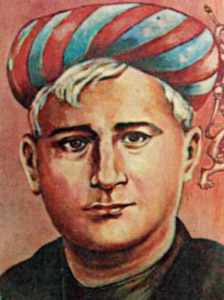EMBRACING a range of educational, health, economic and
social activities, the cluster of institutions at Gandhigram, in Dindigul
district of Tamil Nadu, is outstanding proof of Dr. T. S. Soundram's committed
and selfless service to the underprivileged. Along with her husband, the late
G. Ramachandran, she founded the Gandhigram Trust in 1947 .The Gandhigram Rural
Institute became a deemed university in 1976 and the other centres which reach
out to the needy, promote Khadi and village industries and help the rural
community become self sustaining, are also vibrant today.
 |
| Dr. T. S. Soundram [August 18, 1904 – October 21, 1984] |
To mark the centenary celebrations of Dr. T.
S. Soundram, at the Cancer Institute, Chennai, eminent speakers from various
fields payed tribute to this remarkable personality — a social worker who
never lost sight of her calling as a doctor, one who was born into one of the
wealthiest families of the South but identified herself completely with the
poor. Eminent persons from various walks of life payed tribute to this remarkable personality — Dr. T. S. Soundram, founder of Gandhigram Trust, on the occasion of her centenary celebrations. Mr. R. Venkataraman, former President of India presided over the function. A postal cover to honour Dr. Soundram was released on
the occasion.
Like most women of her time, Soundram was married when she
was just a child. But she was fortunate to have a husband who was enlightened
and liberal. Soundararajan a doctor, treated the plague affected in Madurai
district in 1925 and succumbed to the disease when he was only in his twenties.
But he wished his wife should fulfil his dream of becoming a doctor and also
remarry.
Encouraged by her progressive parents — the late Sundaram
Iyengar who founded the TVS industrial house and his wife Lakshmi Ammal —
Soundram acquitted herself brilliantly at the Lady Hardinge Medical College in
New Delhi. It was in Delhi that she met Ramachandran. [She had the courage to
break social conventions and barriers of caste through her marriage with him.] It was also here that she made friends with Dr. Susheela Nayyar and through her
met the Mahatma. Dr. Soundram was privileged to wear a saree made of yarn spun
by Kasturba and a mangalsutra dipped in turmeric by the Mahatma himself for her
wedding. She began her medical practice on her return to Madras.
In 1942, the couple involved themselves with fervour in the
Quit India movement. The Mahatma was so impressed with her commitment that he
appointed her the representative of the Kasturba Gandhi National Memorial Trust
in South India and directed that a centre be started in a remote rural area.
Dr. Soundram was passionate in promoting the welfare of
women and children and so the Avvai Ashram came into being in Sivasailam in
Tirunelveli district. Family welfare and community development were other areas
of thrust. Elected as Member of the Legislative Assembly twice, she became a
Member of Parliament in 1962.
Dr. Soundram was awarded the Padma Bhushan in 1962. The same
year she was picked by Jawaharlal Nehru to be the Union Deputy Minister for
Education and she distinguished herself by introducing compulsory primary
education and the NSS.
Mrs. Prema Srinivasan of the TVS family says, ``Dr. Soundram
was an extraorodinary woman. Very affectionate and compassionate, she was a
true Gandhian. Apart from social service she adopted five children and brought
them up as her own, got them married and settled. She was like a mother to my
husband." [The late Srinivasan was Dr. Soundram's younger brother]
Adds Mrs. Sushila Padmanabhan, social worker and niece of
Dr. Soundram: ``Nobody could be as encouraging and instil self-confidence as
Dr. Soundram could. She taught me to believe in myself and in my abilities. She
always professed faith in investment, not just in time but in people. Never one
to procrastinate, she would reply promptly to anybody who wrote to her. And she
was truly selfless."
Well-known social worker Sarojini Varadappan recalls how Dr.
Soundram would travel by road, then by boat and bullock cart to reach Kovalam
to attend to deliveries.
``Dr. Soundram was very good at playing the veena. She would
also design the khadi sarees she wore and gift similar sarees to my mother and
Indira Gandhi. Even when confined to a wheel chair, she attended the function
we had organised for her 80th birthday in 1984." [She passed away a few
months later].
Dr. R. Kousalya Devi, Managing trustee, GandhigramTrust,
also reiterates Dr. Soundram's simplicity. ``At any point of time she would
possess only three sets of clothes — one to wear, one for a spare and the third
for the wash. She had three gurus — at first her mother, later Dr. Muthulakshmi
Reddi and then Gandhiji. He told her that she should not restrict herself only
to health care and she more than lived up to his expectations. Her heart was in
Gandhigram."
[Courtesy: The Hindu]
For more info on Gandhigram Trust, you may log on to the following link:






































